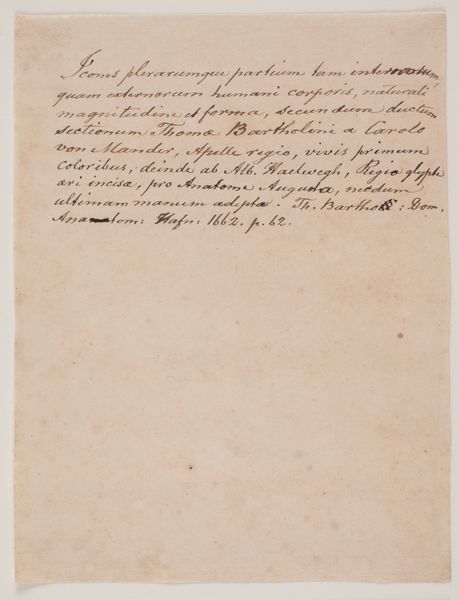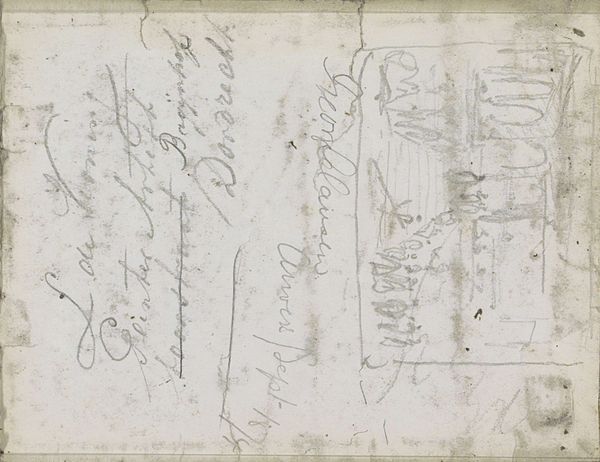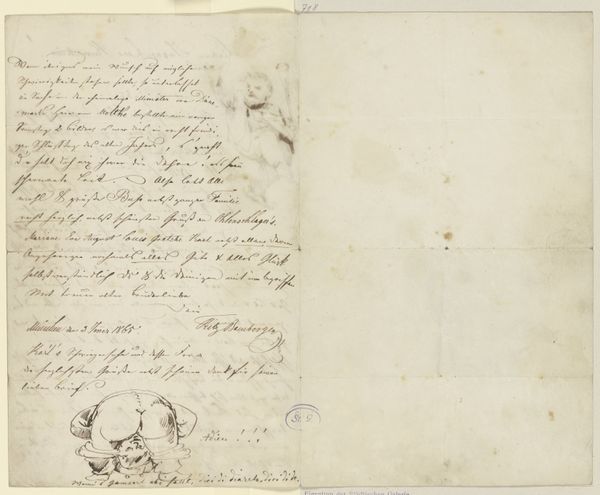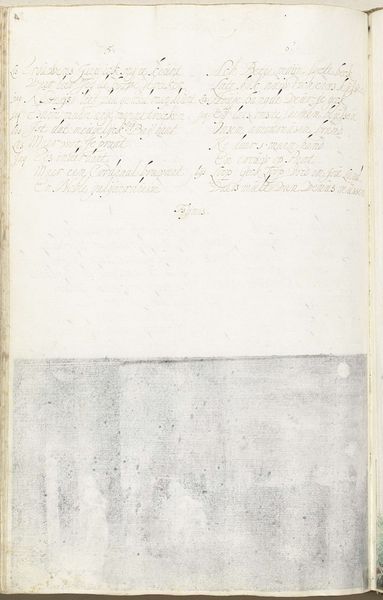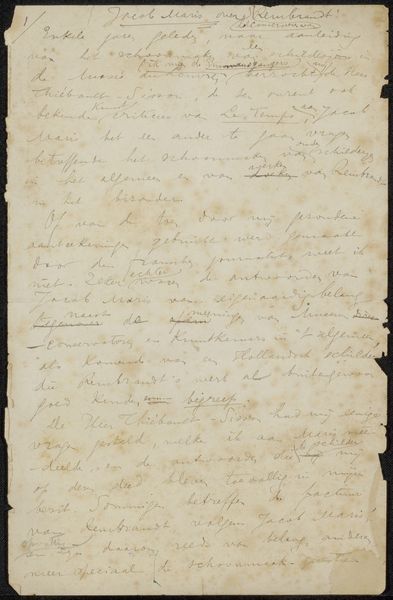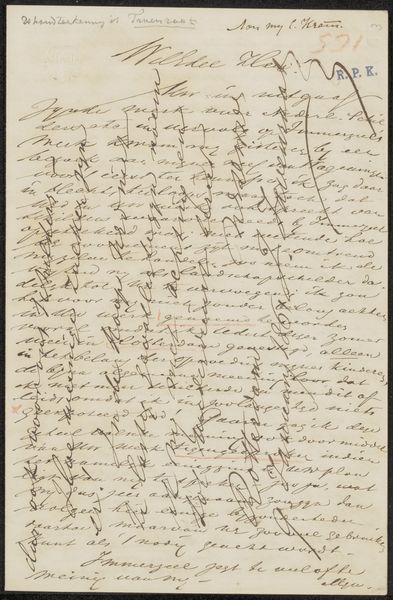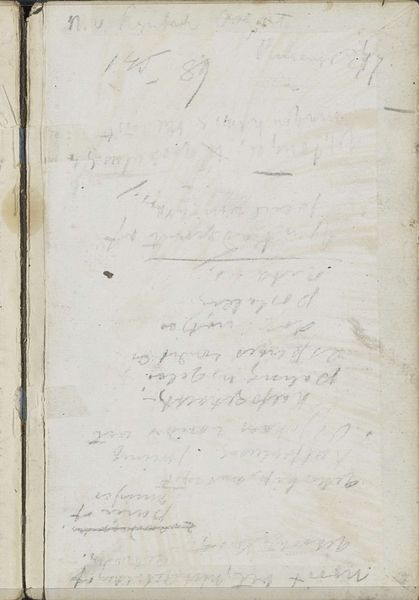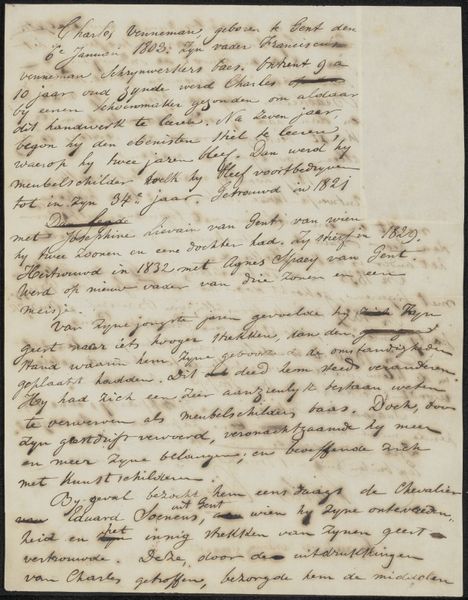
drawing, paper, ink
#
portrait
#
drawing
#
water colours
#
paper
#
11_renaissance
#
ink
#
mixed medium
#
mixed media
#
watercolor
Dimensions: height 157 mm, width 273 mm
Copyright: Rijks Museum: Open Domain
Curator: Before us is "Twee zittende kerkvaders in zwikken," an intriguing drawing rendered with ink and watercolor on paper, created sometime between 1580 and 1600. Editor: My immediate impression is one of aged fragility. The light washes and faded lines give it an ethereal, almost dreamlike quality. It seems like a whisper from the past, barely clinging to the surface. Curator: Indeed. This artwork invites contemplation on the role and representation of religious figures during a period of immense change and religious reformation. Images of church fathers were potent symbols then. Editor: And the composition, though simple, guides the eye. The subtle tonal variations and the artist's controlled use of negative space create a visual harmony. The lines define form but they’re delicate. Curator: Consider how such imagery functioned within the religious and political landscape of the time. What ideologies did these depictions uphold or perhaps challenge? The church, then and now, remains in constant flux within evolving power dynamics. Editor: I'm more drawn to the intimate quality created by the medium. Watercolor, especially when thinly applied like this, evokes impermanence. It highlights the drawing's status as an idea, a preliminary sketch, open to alteration. Curator: Preliminary perhaps, yet pregnant with meaning! Think of the role these men, the Church Fathers, played in shaping doctrine and societal norms. To depict them this way, even as a study, speaks volumes about their continued relevance and authority, but also the questions that were raised about that power. Editor: And consider the semiotics of the aged paper itself. The staining and fading become part of the piece, not merely defects. They add layers of history and contribute to the artwork's overall meaning, evoking a sense of time and reverence. Curator: Absolutely. It speaks to our contemporary obsession with age and preservation, imbuing the artwork with greater social and historical value. We frame and preserve such artifacts to bolster a sense of collective history. Editor: So, while you contextualize it within societal constructs and historical implications, I appreciate it for its delicate dance of line, form, and the passage of time rendered on a humble piece of paper. Curator: A fascinating interplay of perspectives, demonstrating how a single artwork can be both a product of its time and a testament to enduring artistic principles.
Comments
No comments
Be the first to comment and join the conversation on the ultimate creative platform.
